I typically default to brisket for the highlight of a Passover seder (if you haven’t tried my recipe, it’s fantastic), but sometimes you want lighter fare, particularly as Spring temperatures start to rise. This dish fits the bill, with a Middle Eastern flavor profile and a holiday-worthy visual presentation. Fish fillets are crusted with a generous coating of homemade dukkah – which is one of my favorite spice blends – and cooked until the skin is shatteringly crisp. Served over a horseradish-spiked pistachio “cream” and topped with a relish of fresh spring vegetables, it’s a gorgeous and delicious meal.
I know holiday prep can be overwhelming, so I’ve designed this recipe with that in mind. Roast and peel the beets in advance and store them in the fridge (or if you want to make it even easier and use store-bought roasted beets, I won’t tell). You can also prepare the pistachio cream, spring vegetable relish, and dukkah spice mix ahead of time, then all that’s left to do before the meal is crust and sauté the fish, plate, and serve.
To make the pistachio cream you’ll need to soak the nuts; you can either do a cool overnight soak, or a quick hot soak right before. Drain the soaked pistachios and add them to a blender or food processor along with the water, fresh lemon juice, horseradish, and a generous pinch of salt. Puree the cream until smooth (you may need to add a touch more water), taste, and adjust it to your liking with additional lemon, salt, and/or horseradish if needed. (Quick note about the horseradish: I listed prepared in the recipe because it’s easier to find in most supermarkets, but if you can find the fresh root and grate it yourself, even better.)
Transfer the cream to a serving dish, or if making ahead keep it in a jar in the fridge until you need it.
The spring vegetable relish is up next. I make some variation of this for serving over fish quite often, because I love the pop of flavor, beautiful colors, and contrast of texture that it adds. It comes together really quickly, you just want to give the fennel a couple of minutes over heat to soften a bit and mellow out the anise flavor.
Heat the oil in your skillet, add the diced fennel with a pinch of salt, and give it a toss. Sauté until slightly softened, which will take about 2 minutes.
When the fennel is ready, you’ll notice that the color has changed from a chalky, opaque white to a softer translucent white.
Scrape the fennel into a medium bowl and add the rest of the vegetables plus the preserved lemon rind and mint. Whisk the remaining olive oil with the cider vinegar, coriander, salt and pepper, pour it over the vegetables, and toss it all together. (If you’re making this ahead of time, combine only the vegetables and lemon rind, and refrigerate. When you’re ready to serve, add the mint, whisk up the dressing, and toss to coat. Also know that if you use red beets they’ll likely stain the rest of the relish pink by the time you use it, so you may want to keep them separate and fold in just before serving.)
Time to prepare my preferred dukkah blend for coating the fish. I love using a mortar and pestle to pound it, but you can absolutely do this in a spice mill or [very clean] coffee grinder instead.
Add the nuts and spices to your mortar or grinder, and pound or pulse until the pistachios are broken into smaller pieces and the seeds are somewhat crushed.
Add the same seeds and pound again to break the pistachios down a bit more and incorporate everything into a relatively uniform coarse meal.
It’s okay if there are a few slightly larger pieces of pistachio left, the assorted sizes add nice texture.
Here’s a closeup. FYI, if you’re in a pinch and don’t have any of these tools, add the nuts and spices to a plastic zipper bag, seal it up, and bash the heck out of it with a rolling pin or the flat bottom of a skillet until everything is coarsely crushed. Then add the sesame seeds and smash it again.
Time to prep and cook those fish fillets! Fish skin has a tendency to shrink and curl up when it hits the heat, and we want to keep these fillets nice and flat as they cook. By making shallow slashes in the skin – a process called scoring – you release some of the surface tension and decrease the pull during cooking so it’s easier to keep the fillets flat and the skin in place.
To score the fillets, use a very sharp knife to make several diagonal cuts through the skin of each one, taking care to only cut through the skin to the very surface of the fish – you don’t really want to cut into the fillets themselves. Once you’ve scored the fillets, let them air-dry for at least 20 minutes on a wire rack. The drier the skin, the crispier it will get when you cook it.
To crust the fish, rub the flesh side of each fillet with olive oil, and spoon the dukkah over it. Press gently to adhere an even coating of dukkah to the entire surface. Set a large skillet over medium-high heat, making sure you use a pan that’s big enough to accommodate the fillets without crowding them. If it’s a tight fit, cook the fish in batches. They need their space! Heat the oil until it shimmers, and carefully place the fillets in the pan skin-side down (watch out for spattering). Use a spatula to press down gently on the fillets for the first 30-60 seconds, which will keep them nice and flat. Cook the fillets for a total of 4-5 minutes on this side until the skin is nice and crisp and the fillets release easily from the pan – if they stick when you try to flip them, it means they’re not ready.
Turn the fillets over and cook them on the other side for a minute or so, just until the dukkah crust is firm and golden and the fish is cooked through. Transfer the cooked fish to a plate or sheet pan while you prepare your serving dishes.
Add a schmear of the pistachio cream to each plate and place a fillet on top. Scatter some of the spring vegetable relish over the fillets, and garnish with a pinch of reserved dukkah and a sprinkle of chopped mint. You’re going to have extra cream and relish – I recommend setting a bowl of each on the table so guests can help themselves to more. Enjoy!
- Pistachio Cream:
- 62g (½ cup) raw pistachio kernels, soaked overnight¹
- 120ml (½ cup) filtered water
- 2ml (10 tsp) fresh lemon juice
- 15g (1 Tbsp) prepared horseradish²
- Generous pinch kosher salt
- Spring Vegetable Relish:
- 4 oz (½ medium bulb) fennel, cut into ⅛ inch dice
- 90ml (6 Tbsp) extra virgin olive oil, divided
- 12 oz mixed spring beets, roasted and peeled, cut into ⅛ inch dice
- 4 oz (about 6 small) radishes, scrubbed and cut into ⅛ inch dice
- 1 Tbsp minced shallot
- 1 Tbsp rinsed preserved lemon rind, finely chopped
- 6 Tbsp chopped fresh mint (plus more for garnish)
- 40ml (2 Tbsp + 2 tsp) apple cider vinegar
- ½ tsp ground coriander
- ¼ tsp kosher salt
- 4 grinds black pepper
- Fish:
- 4 [6-oz] skin-on fillets of trout, Arctic char, or salmon
- 20ml (4 tsp) extra virgin olive oil
- ½ tsp kosher salt
- ½ cup dukkah*
- Avocado oil
- *To make dukkah: In a mortar & pestle or spice grinder, combine 28g/5 Tbsp toasted pistachio kernels, 4g/2 tsp toasted cumin seed, 3g/2 tsp toasted coriander seed, 2g/1 tsp toasted fennel seed, 1 tsp dried mint, 1 tsp urfa biber or Aleppo pepper, ¼ tsp kosher salt, and ¼ tsp fresh black pepper; pulse or pound to break down coarsely. Add 24g/2 Tbsp + 2 tsp toasted sesame seeds and pulse or pound just to combine. Measure out 6 Tbsp for coating fish, and reserve remaining mixture for garnish.
- Make pistachio cream: drain pistachios and add to blender with water, lemon juice, and salt. Puree until smooth. Taste and add more salt or lemon if desired.
- Make spring vegetable relish: Add 15ml/1 Tbsp olive oil to a large skillet² over medium heat. When oil is hot, add diced fennel and a pinch of salt. Toss to coat, and sauté for 1-2 minutes, stirring occasionally, until slightly softened. Transfer fennel to a medium bowl and add beets, radishes, shallot, preserved lemon, and mint. Whisk together remaining 75ml/5 Tbsp olive oil, vinegar, coriander, salt, and pepper; pour over vegetables, and toss to combine.
- Prep fish: pat fillets dry thoroughly with paper or kitchen towels. Place fillets on work surface, skin-side up. Using a very sharp knife, cut several *shallow* diagonal slashes just through the skin of the fish³. Transfer fillets to a wire rack, skin-side down, and let sit at room temperature for 20 minutes to air-dry completely.
- Crust fish: Rub top of each fillet with 1 tsp olive oil, and sprinkle with kosher salt. Spoon about 1 ½ Tbsp dukkah onto each fillet, spread to cover the entire exposed surface, and press gently to adhere.
- Cook fish: Add 30ml/2 Tbsp avocado oil to large skillet⁴ over medium-high heat. When oil is shimmering, place fillets in pan skin-side down, pressing gently with a spatula for the first 20-30 seconds to keep fillets flat. Cook for 4-5 minutes until skin is crisp and fillets release easily from pan. Flip fillets over and cook on dukkah side for 1 - 1 ½ minutes, just until crust is golden.
- Serve: Place one fish fillet on each of four plates. Scatter relish over and around fish, and drizzle pistachio cream over the top. Sprinkle with chopped mint and a generous pinch of remaining dukkah, and serve additional relish and cream on the table for guests to help themselves.
² If you can find a nice-looking piece of fresh horseradish, feel free to use that instead. Wash and peel it, then finely grate 1 Tbsp and use it in place of the prepared.
³ Scoring the skin of a fish fillet helps keep it from shrinking up during cooking. The key is to release the surface tension of the skin without cutting into much - if any - of the flesh beneath.
⁴ Make sure your skillet is sufficiently wide to accommodate the fillets without crowding them. If necessary, cook them 2 at a time, using 15ml/1 Tbsp oil for each batch.
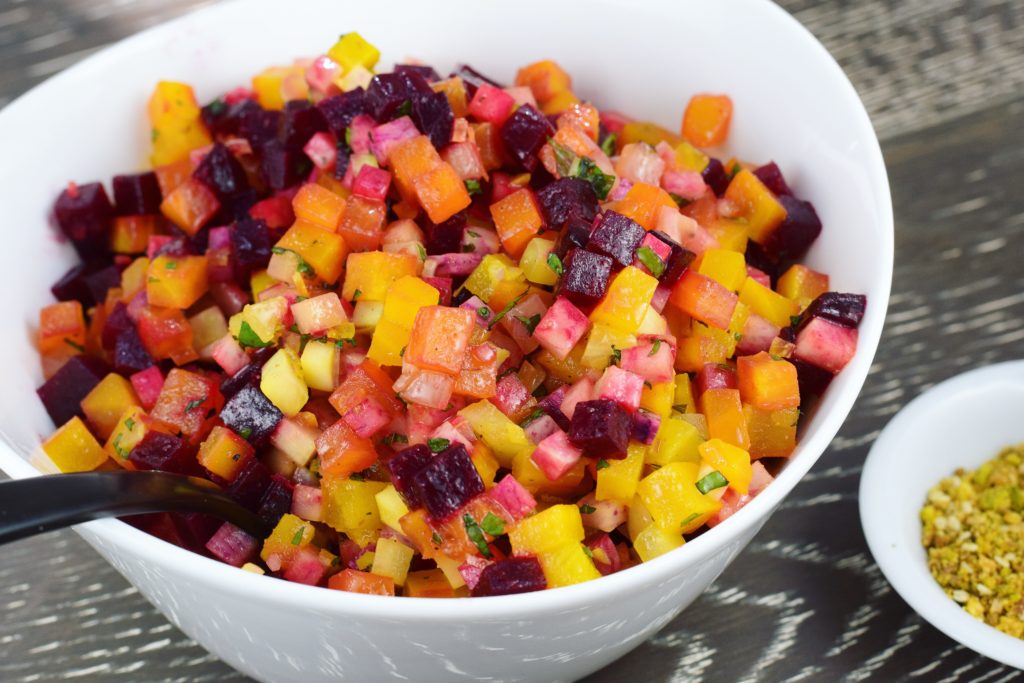
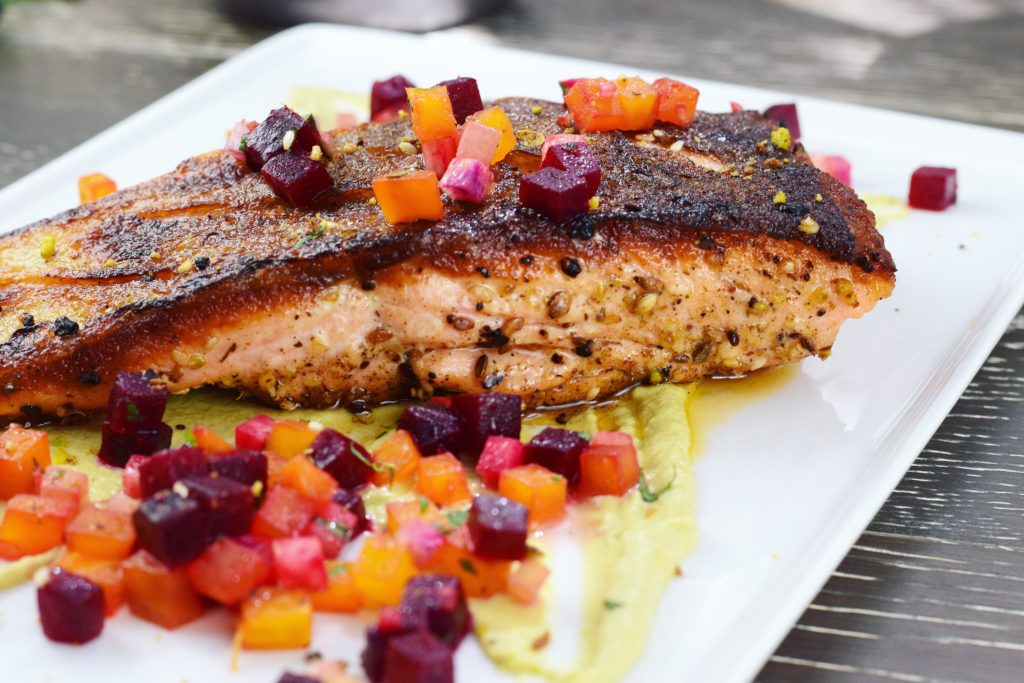

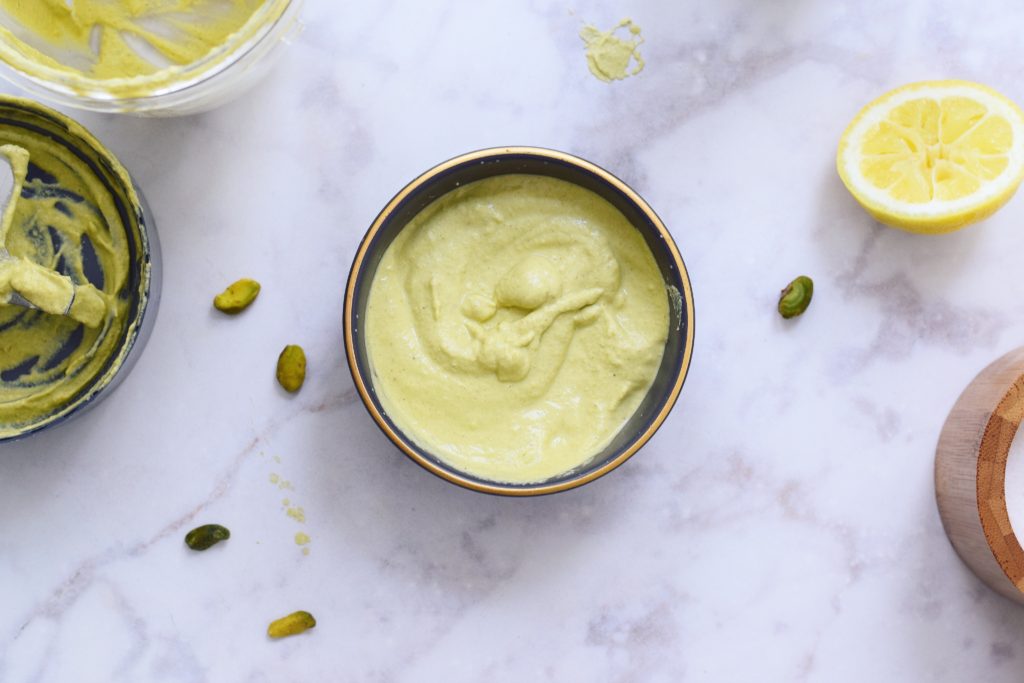
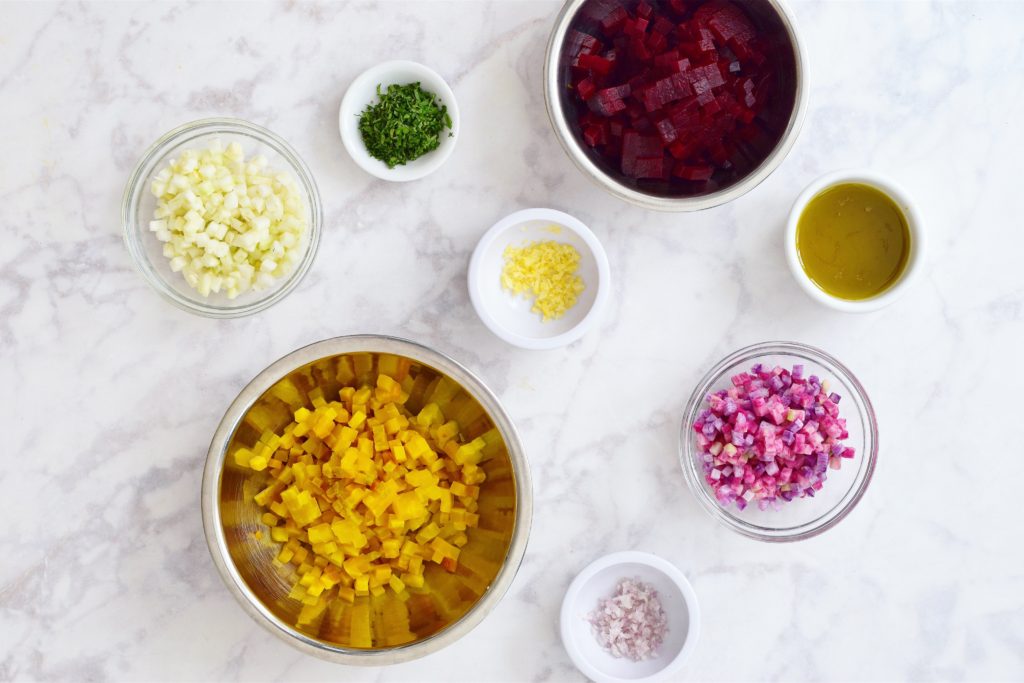
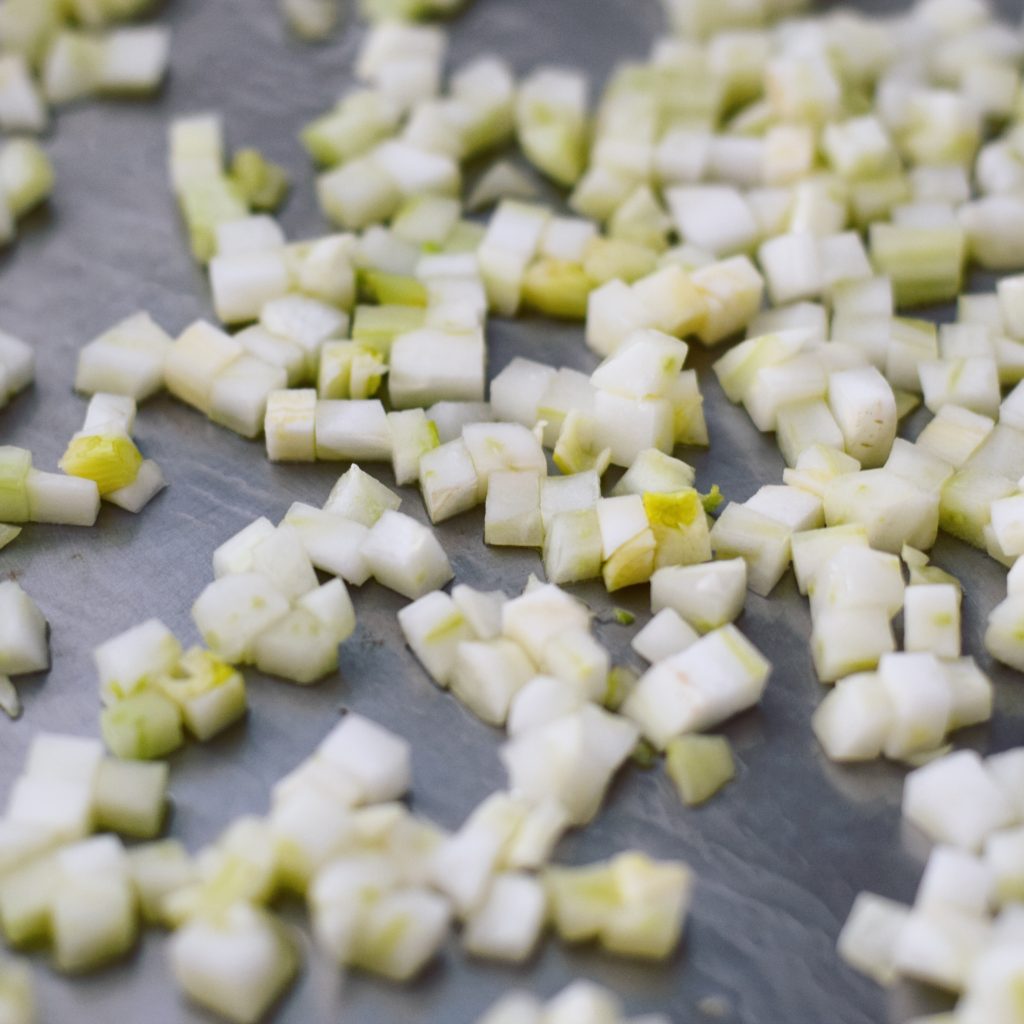
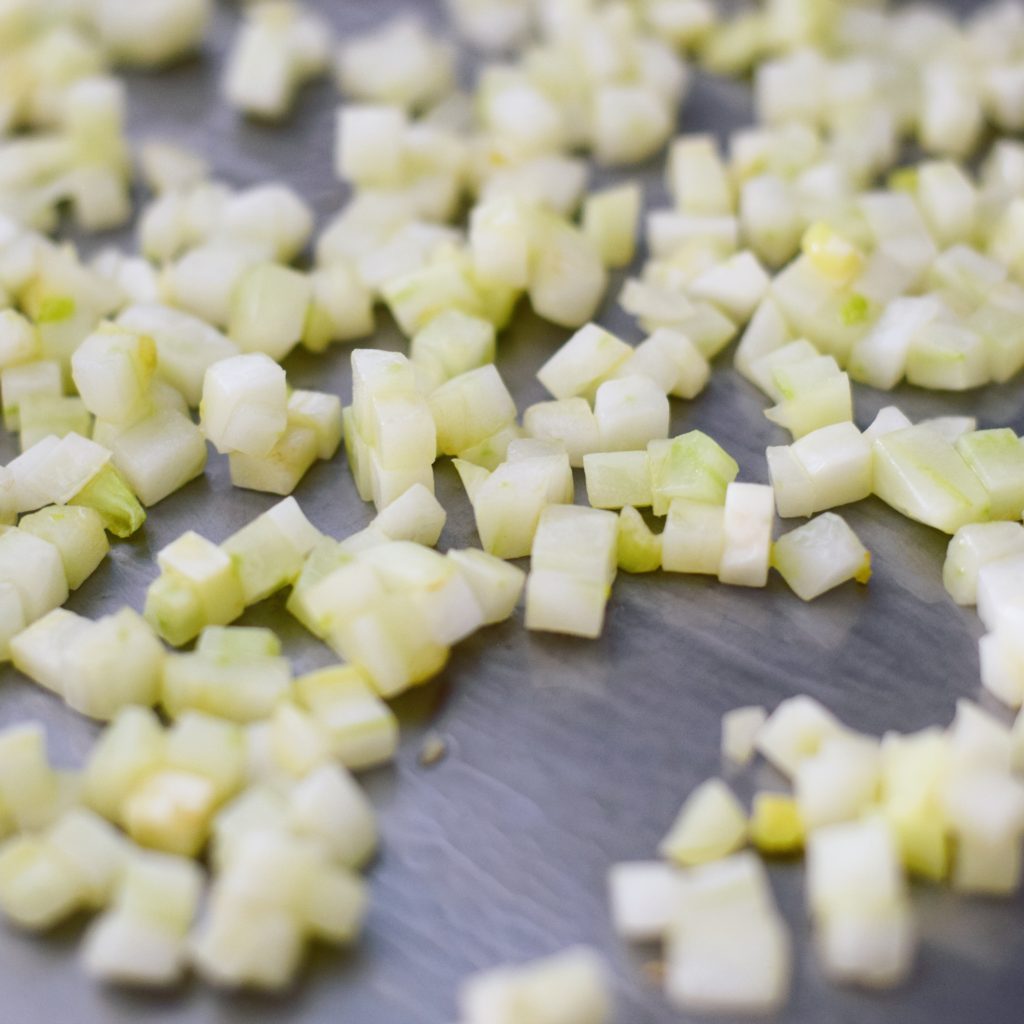


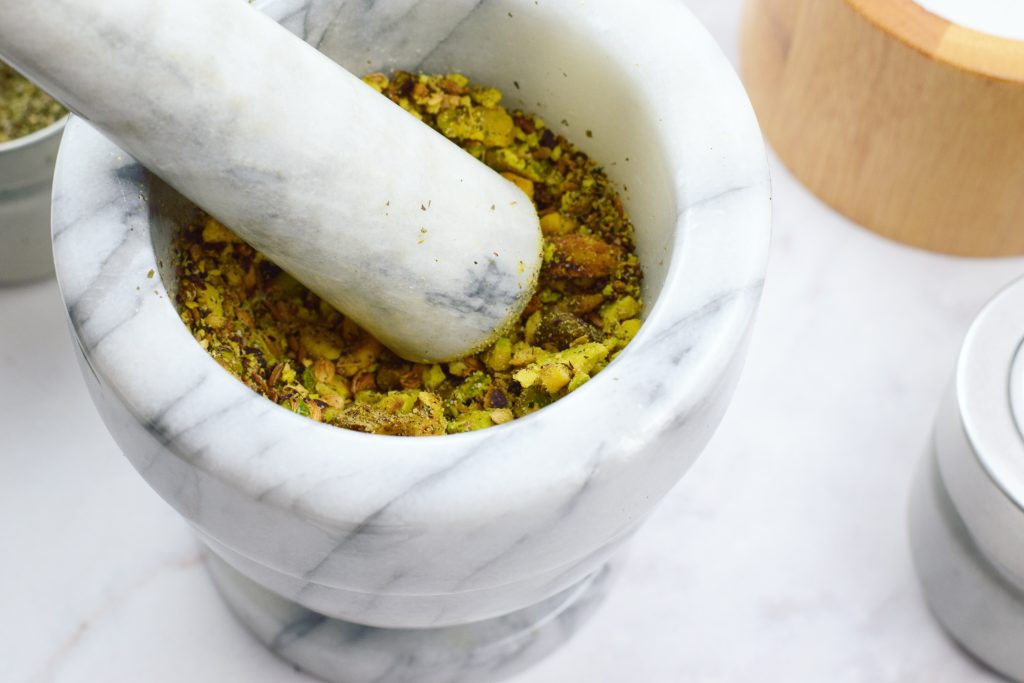
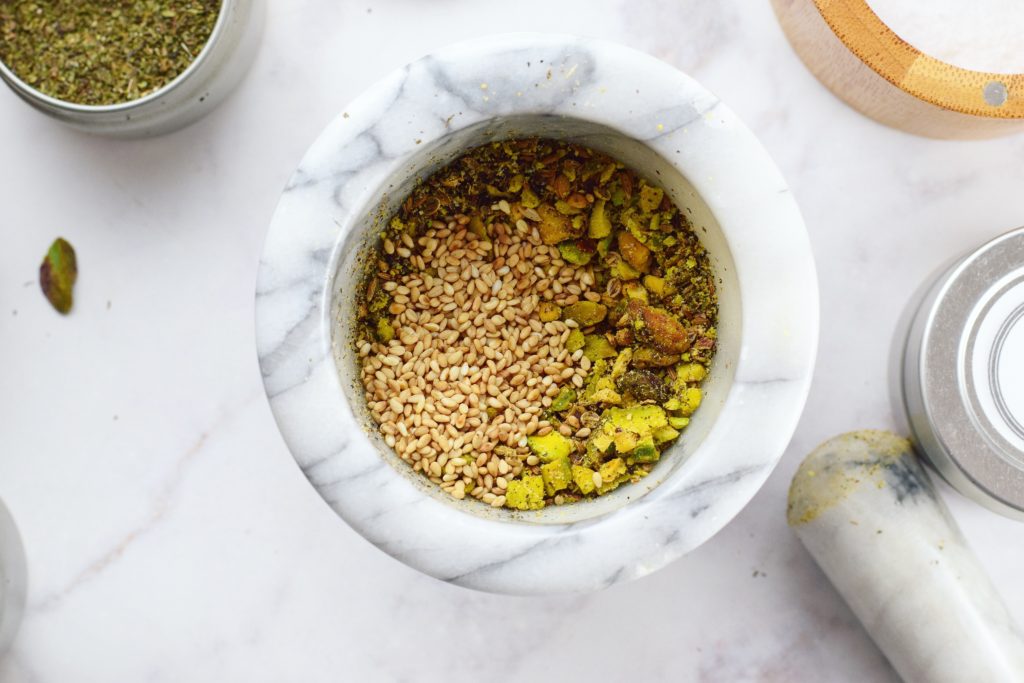
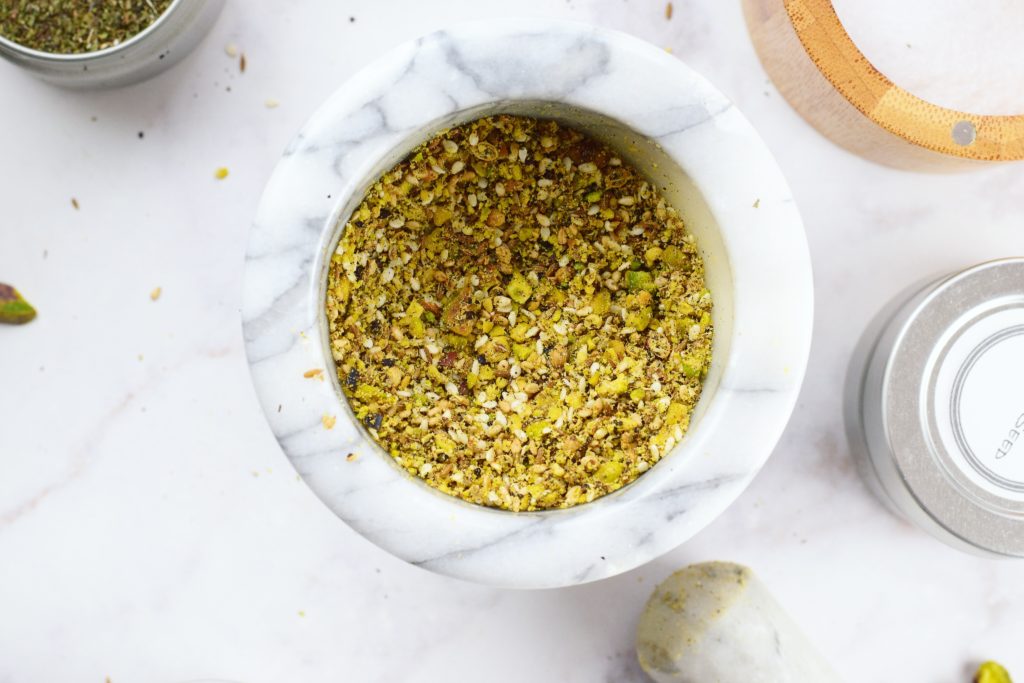
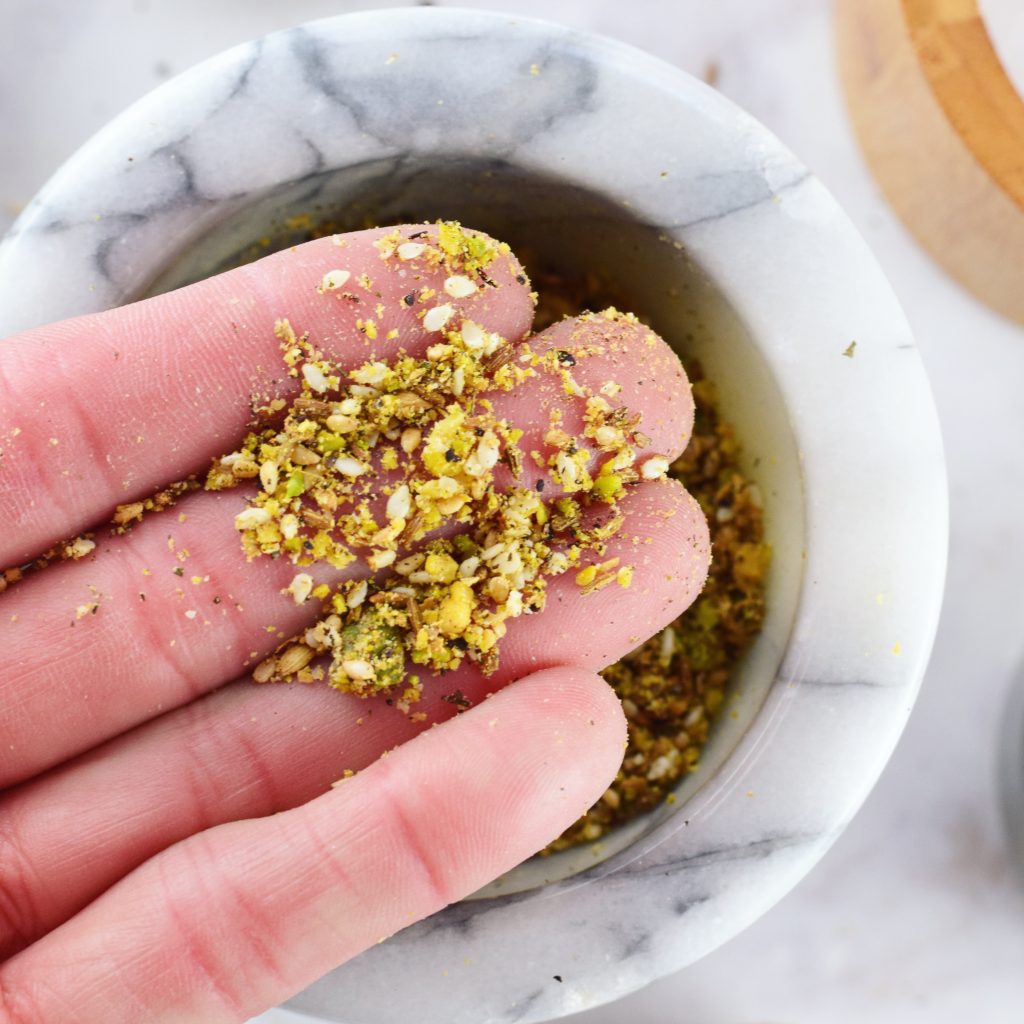
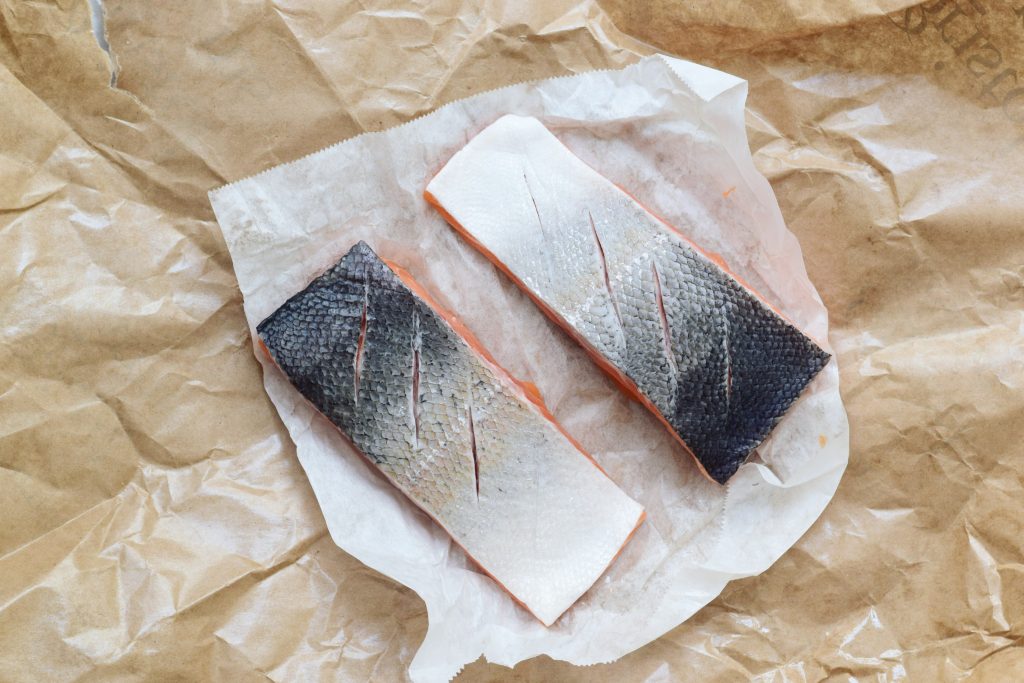
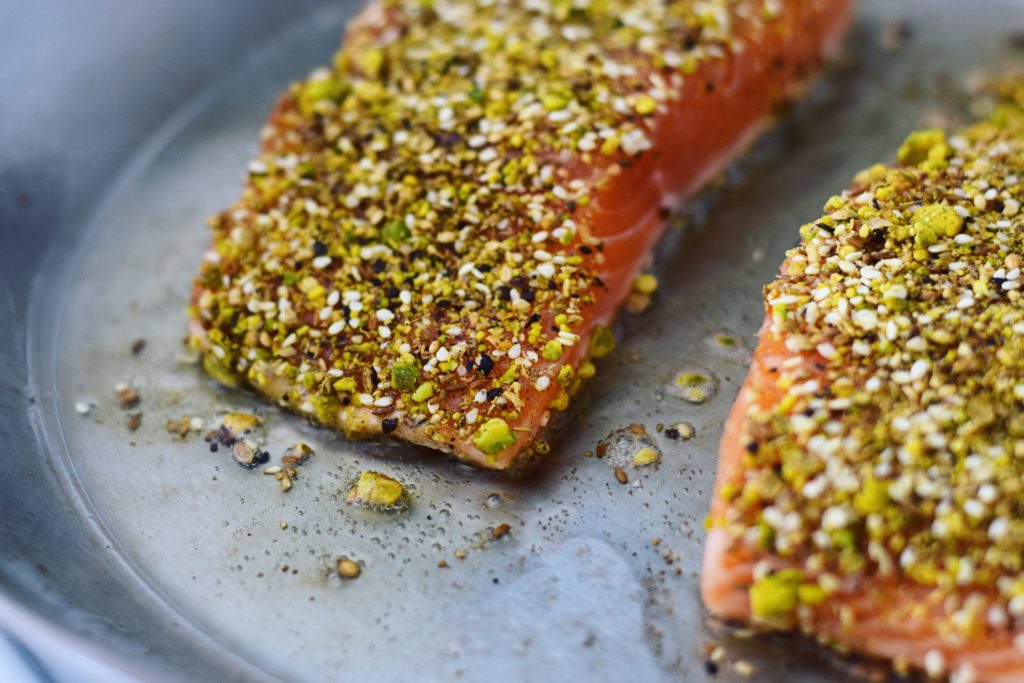

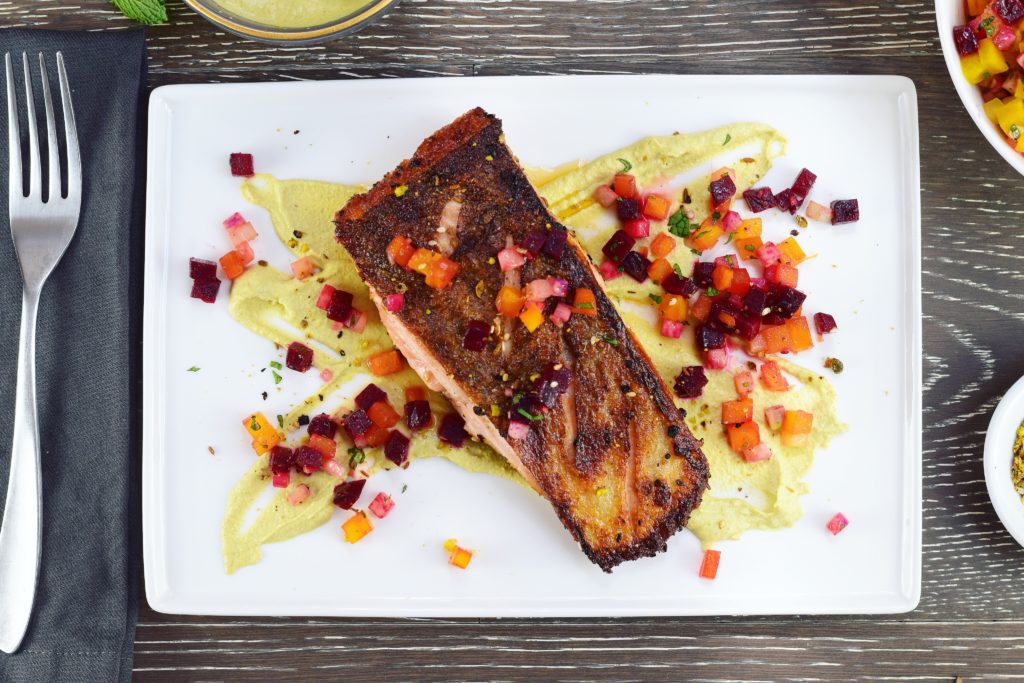
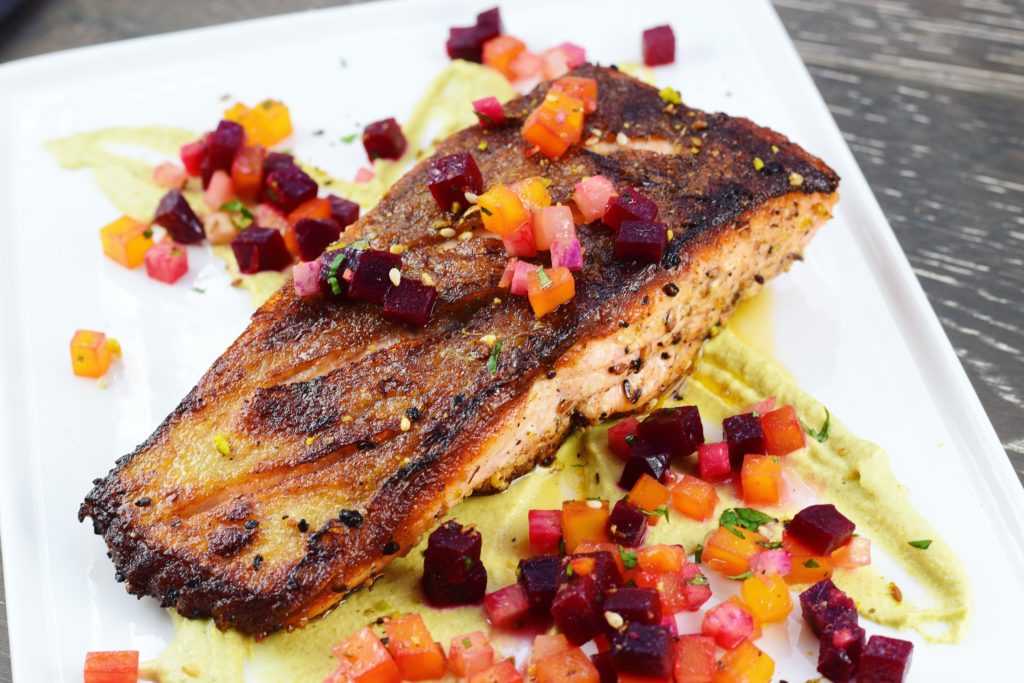
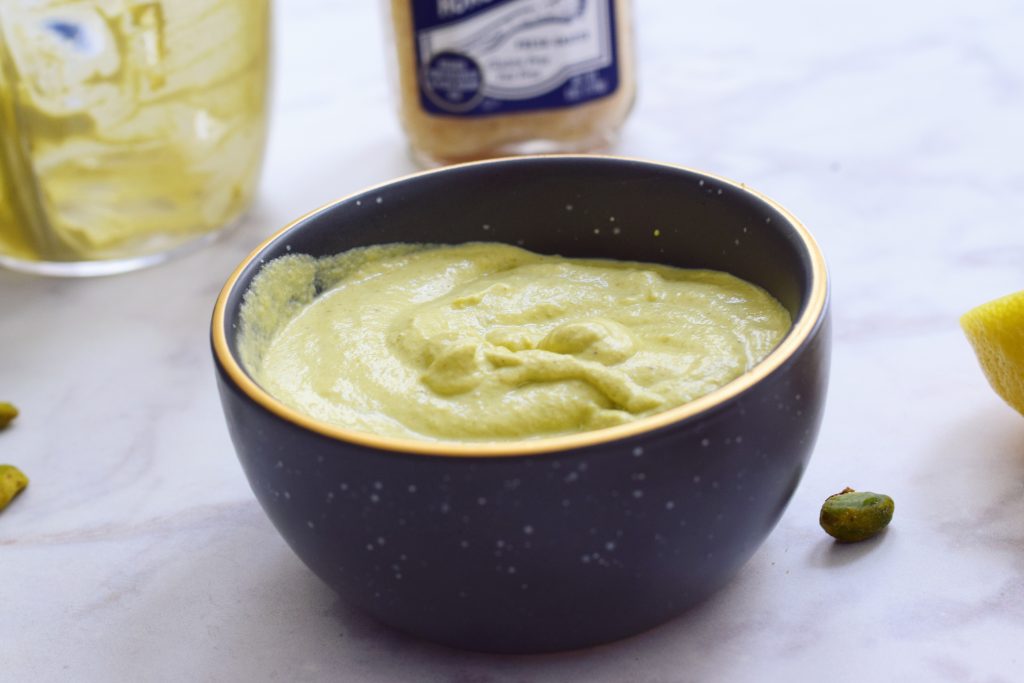
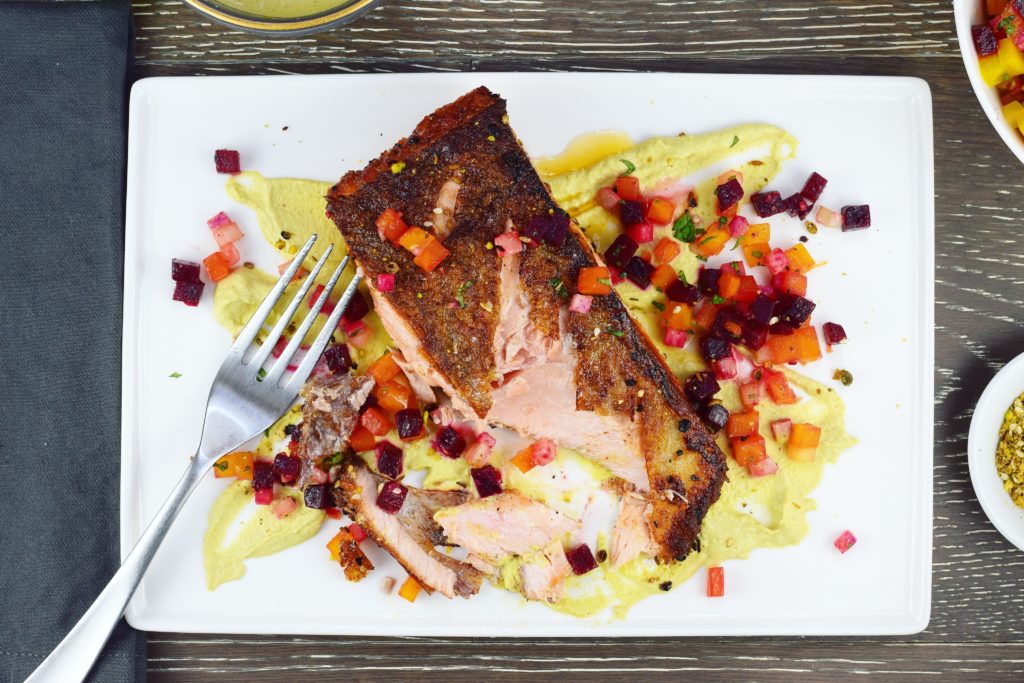


Whether you’re vegetarian or not, this is the kind of dish that will satisfy anyone. Gentle spicing helps to lift the sauce, and the yogurt and mint oil make it the kind of dish perfect for dipping hunks of bread into.